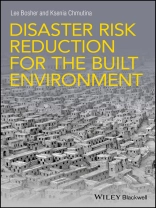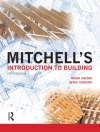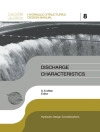Disaster Risk Reduction for the Built Environment provides a multi-facetted introduction to how a wide range of risk reduction options can be mainstreamed into formal and informal construction decision making processes, so that Disaster Risk Reduction (DRR) can become part of the ‘developmental DNA’. The contents highlight the positive roles that practitioners such as civil and structural engineers, urban planners and designers, and architects (to name just a few) can undertake to ensure that disaster risk is addressed when (re)developing the built environment. The book does not set out prescriptive (‘context blind’) solutions to complex problems because such solutions can invariably generate new problems. Instead it raises awareness, and in doing so, inspires a broad range of people to consider DRR in their work or everyday practices.
This highly-illustrated text book provides a broad range of examples, case studies and thinking points that can help the reader to consider how DRR approaches might be adapted for differing contexts.
قائمة المحتويات
List of Figures xi
List of Tables xix
Note on the Authors xxi
Foreword xxiii
Acknowledgements xxv
List of Acronyms xxvii
List of Case Studies xxxi
List of Thinking Points xxxiii
Section I Introduction to Book and Concepts 1
1 Introduction 3
1.1 So what is a Disaster? 4
1.2 What are the Hazards and Threats? 4
1.3 Climate Change and Disasters 5
1.4 Impacts of Disasters Globally 9
1.5 Trends in the Occurrence of Disasters 11
1.6 Economic Losses 13
1.7 The Potential Roles of the Construction Sector in DRR 16
1.8 Scope of the Book 16
1.9 Structure of the Book 17
References and Suggested Reading 17
2 Disaster Risk Reduction 21
2.1 Learning Objectives 21
2.2 Key DRR Concepts and Terms 21
2.3 International Approaches to DRR 26
2.3.1 Milestones in History of DRR 26
2.3.2 Sendai Framework for Disaster Risk Reduction 29
2.3.3 ‘Making Cities Resilient’ Campaign 31
2.4 Community Resilience 32
2.5 Risk Management 34
2.5.1 Phases of Disaster Risk Management 34
2.5.2 Risk Management Elements 37
2.5.3 Existing Guidance 40
2.6 Summary 43
Further Reading 43
Section II Hydro-Meteorological Hazards 45
3 Flooding 47
3.1 Learning Objectives 47
3.2 Living with Water 47
3.3 Overview of the Typical Impacts of Floods 49
3.4 Causes of Flooding 50
3.5 Riverine Floods 51
3.6 Coastal Floods 52
3.7 Flash Floods 55
3.8 Urban (Pluvial) Floods 56
3.9 Risk Management 56
3.9.1 Historical Approaches 56
3.10 Hazard Identification 59
3.11 Assessment of the Vulnerabilities 61
3.11.1 Appropriate Uses 62
3.12 Determination of the Risk 63
3.12.1 Flood Damage Estimation 63
3.13 Identification and Prioritisation of Risk Reduction Options 66
3.13.1 Prevention of Hazard 70
3.13.2 Detection of Hazard 70
3.13.3 Control of Hazard 74
3.13.4 Mitigation of Hazard 76
3.13.5 Emergency Response 80
3.14 Summary 85
Further Reading 86
4 Windstorms 89
4.1 Learning Objectives 90
4.2 Living with Windstorms 90
4.3 Overview of the Typical Impacts of Windstorms 91
4.4 Causes of Windstorms 92
4.5 Tropical Windstorms 93
4.6 Tornadoes 98
4.7 Risk Management 101
4.7.1 Historical Approaches 101
4.8 Hazard Identification 104
4.9 Assessment of the Vulnerabilities 106
4.10 Determination of the Risk 111
4.10.1 Windstorm Damage Estimation 111
4.11 Identification and Prioritisation of Risk Reduction Options 112
4.11.1 Detection of Hazard 112
4.11.2 Control of Hazard 114
4.11.3 Mitigation of the Hazard 114
4.11.3.1 Cyclones/Hurricanes/Typhoons 114
4.11.3.2 Tornadoes (many of these options will also be useful for mitigating other windstorm hazards) 114
4.11.4 Emergency Response 114
4.12 Summary 116
Further Reading 120
Section III Geological Hazards 123
5 Earthquakes 125
Learning Objectives 126
5.1 Living with Earthquakes 126
5.1.1 Overview of the Typical Impacts of Earthquakes 126
5.2 Causes of Earthquakes 127
5.2.1 The Natural Hazard 130
5.2.1.1 Types of Fault Boundaries 130
5.3 Seismic Activity 133
5.4 Risk Management 135
5.4.1 Historical Approaches 135
5.5 Hazard Identification 135
5.6 Assessment of the Vulnerabilities 136
5.7 Determination of the Risk 142
5.7.1 Earthquake Damage Estimation 142
5.8 Identification and Prioritisation of Risk Reduction Options 144
5.8.1 Inherent Safety 146
5.8.2 Detection of Hazard 146
5.8.3 Mitigation of Hazard 146
5.8.4 Earthquake‐Resistant Construction 146
5.8.5 Mitigation of Tsunamis 147
5.8.6 Emergency Response 150
5.9 Summary 152
Further Reading 154
6 Volcanoes 155
6.1 Learning Objectives 155
6.2 Living with Volcanoes 155
6.3 Overview of the Typical Impacts of Volcanoes 157
6.4 Causes of Volcanoes 159
6.4.1 The Natural Hazard 160
6.4.2 Types of Volcanoes 160
6.5 Volcanic Activity 161
6.6 Risk Management 169
6.6.1 Historical Approaches 169
6.7 Risk Management 172
6.7.1 Hazard Identification 172
6.7.2 Assessment of the Vulnerabilities 172
6.7.3 Determination of the Risk 173
6.7.3.1 Primary Volcanic Hazards 173
6.7.3.2 Secondary Volcanic Hazards 174
6.8 Identification and Prioritisation of Risk Reduction Options 175
6.8.1 Inherent Safety and Prevention 176
6.8.2 Detection of Hazard 177
6.8.3 Control of the Hazard 178
6.8.4 Mitigation of Hazard 178
6.8.5 Emergency Response 178
6.9 Summary 182
Further Reading 183
7 Landslides 185
Alister Smith
7.1 Learning Objectives 185
7.2 What are Landslides? 185
7.3 Statistics on Landslides 187
7.4 Causes and Impacts of Landslides 189
7.5 Risk Management 193
7.5.1 Hazard Identification 193
7.5.2 Assessment of the Vulnerabilities 196
7.5.3 Determination of the Risk 196
7.5.4 Identification and Prioritisation of Risk Reduction Options 196
7.6 Summary 201
Further Reading 204
Section IV Key Considerations and Ways Forward 207
8 Key Principles 209
8.1 Learning Objectives 209
8.2 Integrating DRR Measures into Construction Practice 209
8.2.1 Resilient Built Environment 210
8.2.2 Structural and Non‐Structural Approaches 213
8.3 Seven Key Principles 216
8.3.1 Principle 1: Adopt a Holistic Perspective 216
8.3.2 Principle 2: Develop and Appropriately Apply Resilient Technologies 217
8.3.3 Principle 3: Engage a Wide Range of Stakeholders (Including Local Communities) in Resilience Efforts 218
8.3.4 Principle 4: Utilise Existing Guidance and Frameworks When Appropriate 222
8.3.5 Principle 5: Exploit Opportunities to Build‐In Resiliency Measures Post‐Disaster 225
8.3.6 Principle 6: Integrate Built Environment and Emergency Management Practitioners Into the DRR Process 226
8.3.7 Principle 7: Mainstream Resilience into the Built Environment Curricula 227
8.4 Summary 230
Further Reading 231
9 DRR and Sustainability: An Integrated Approach 233
9.1 Learning Objectives 233
9.2 Integrating Resilience and Sustainability: Why is it Important? 233
9.3 What is Sustainability? 236
9.3.1 Understanding the Concept: Three Dimensions of Sustainability 236
9.3.2 Global Challenges and Sustainability Index 237
9.3.3 Sustainable Built Environment 240
9.4 Can the Built Environment Be Sustainable and Resilient? 241
9.4.1 Opportunities 244
9.5 Summary 247
Further Reading 250
10 Conclusions and Recommendations 251
10.1 Dynamic Factors (and Root Causes) 252
10.2 Moving away from Disaster Risk Creation 252
10.3 Moving towards a New Developmental DNA 257
10.4 Future Research and Educational Challenges 258
10.5 Final Thoughts for Construction Practitioners 258
10.5.1 Towards DRR as a Core Professional Competency 261
Further Reading 261
Index 263
عن المؤلف
About the Authors Dr Lee Bosher is a Senior Lecturer in Disaster Risk Reduction in the Water, Engineering and Development Centre (WEDC) at Loughborough University, England. He has a background in disaster risk management and his research and teaching includes disaster risk reduction and the multidisciplinary integration of proactive hazard mitigation strategies into the decision–making processes of key stakeholders, involved with the planning, design, construction and operation of the built environment. Lee is coordinator of the International Council for Building’s Working Commission W120 on ‘Disasters and the Built Environment’, a Fellow of the Royal Geographical Society and he has been involved in research projects that investigated how urban resilience can be increased in the UK, Haiti, India, Nigeria and across parts of Europe. Lee’s previous books include ‘Hazards and the Built Environment’ (2008) and ‘Social and Institutional Elements of Disaster Vulnerability’ (2007).
Dr Ksenia Chmutina is a Lecturer in sustainable and resilient urbanism in the School of Civil and Building Engineering, Loughborough University. Her main research interest is in synergies of resilience and sustainability in the built environment, including holistic approaches to enhancing resilience to natural hazards and human–induced threats, and a better understanding of the systemic implications of sustainability and resilience under the pressures of urbanisation and climate change. She has extensive experience of working on RCUK and EU–funded projects that have focused on resilience and sustainability of urban spaces in Europe, China and the Caribbean.












